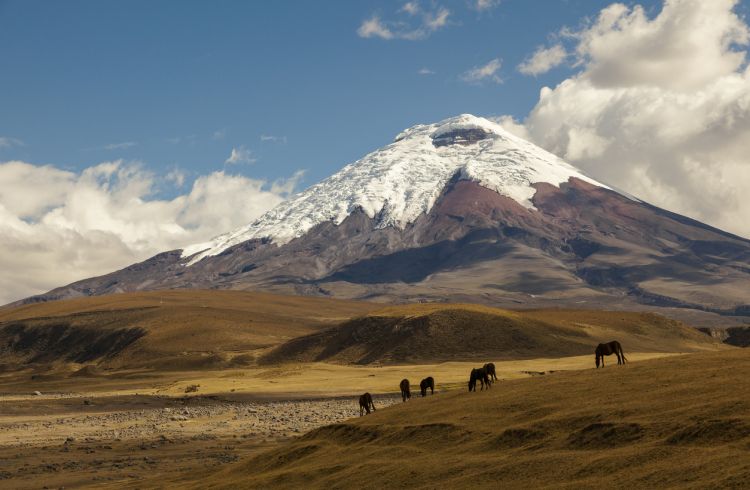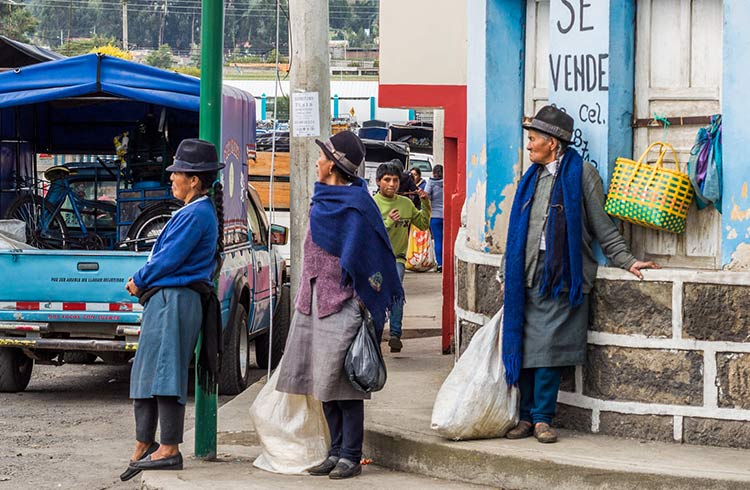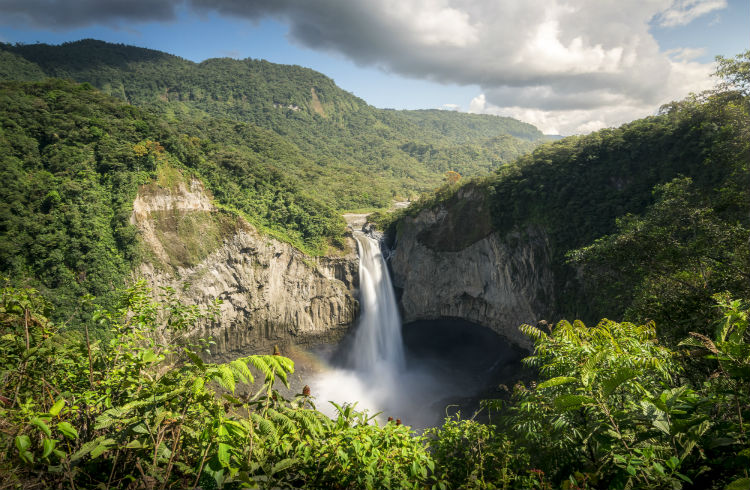How to Stay Healthy While Traveling in Ecuador
Altitude sickness, diarrhea and other problems can befall any traveler in Ecuador, but there are things you can do to stay healthy during your stay in this picturesque country.
 Photo © GettyImages/cavan images
Photo © GettyImages/cavan images
- Vaccinations for Ecuador
- Medical Treatment in Ecuador
- Mosquito-Borne Diseases
- Chagas Disease
- Food and Water Borne Diseases
- Altitude Sickness
Vaccinations for Ecuador
Travelers are advised to keep their routine vaccinations up to date. The following vaccinations are recommended for Ecuador: Typhoid, Hepatitis A, and Hepatitis B.
You will also need a yellow fever vaccination which is effective for up to 10 years. The World Health Organisation lists Ecuador as a yellow fever endemic country (only present in some regions) so you will need proof of vaccination to get back into your own home country, if arriving from another yellow fever endemic country and also if you plan to travel onwards to other countries. Plan ahead by getting it at least two weeks before you depart.
Medical treatment in Ecuador
Pharmacies (
There are public and private medical facilities in Quito and Guayaquil, however, the private clinics and hospitals will require payment upfront before treatment, even for emergency treatment. Medical clinics are few and far between once you leave the urban centers of Ecuador.
Medical treatment facilities in the Galapagos are limited and if you require emergency treatment, you will be transferred to the mainland. For scuba divers, hyperbaric chambers are available in Ecuadorian Navy Base (San Eduardo) in Guayaquil,
Mosquito-borne diseases
Dengue Fever
This disease is common in Latin America and can occur throughout the year – but is more prevalent during the wet season (January to September).
Travelers should take precautions to prevent mosquito bites by wearing suitable clothing and liberally applying a strong mosquito repellent.
Symptoms of dengue fever usually begin seven to 10 days after being bitten and include high fever with aching joints and bones and a headache. If you develop these symptoms, you should seek medical treatment.
Malaria
Like dengue fever, malaria is also spread by mosquitos. Symptoms can include shivering, excessive sweating, headache, chills, and nausea.
Quito, Guayaquil, Cuenca and the Galapagos Islands plus high-altitude areas in the Andean valleys are malaria risk-free. However, if you plan to travel to the Amazonian provinces and the northwestern provinces of Esmeraldas and Carchi, you should take precautions to avoid contracting malaria. This also includes cruising on the Amazon River.
You should consult your doctor or travel clinic about prophylaxis against malaria before leaving home. It's also wise to take other precautions such as wearing long and light-sleeved shirts and pants, applying Deet repellant, sleeping under a mosquito night and avoiding being outdoors during dawn and dusk.
Yellow fever
Related to West Nile and Japanese Encephalitis, yellow fever is found in several parts of Amazonian Ecuador such as Zamora-Chinchipe, Orellana, Napo, Pastaza, Sucumbios, and Morona-Santiago.
Travelers will need to get the yellow fever vaccine if they are planning to travel to these areas.
If traveling to Quito, Guayaquil and the Galapagos, the vaccination is not required however it's recommended to take mosquito bite prevention measures regardless.
Symptoms are flu-like including aching, headache, fever, vomiting etc. As these symptoms are similar to those of other conditions, it's imperative that you seek medical treatment so you can be treated correctly. Treatment is based on easing the symptoms present.
Zika virus
Zika virus is present in Ecuador and while there is no vaccination available for it, like any mosquito-borne disease it's essential to take the necessary precautions to prevent being bitten. The virus is spread by female yellow fever and tiger mosquitos which are generally found during the day between dawn and dusk.
Chagas disease
Also known as American Trypanosomiasis, the parasite Trypanosoma
The disease is common in rural areas esp. those with poor-quality buildings made of mud, adobe or thatch. These dwellings provide the insects with an ideal habitat, hibernating during the day to come out at night to feed on sleeping humans and animals.
Symptoms can vary from mild swelling, headache, fatigue, fever, and rash. However, in some people it can be long-lasting if left untreated, causing heart complications and digestive system issues.
Preventative measures to avoid contracting Chagas disease are similar to preventing other mosquito-borne diseases. Avoid sleeping in mud, thatched and adobe-style buildings where possible.
Food and water-borne diseases
Avoid drinking the local water and stick to drinking only boiled or treated water. Some accommodations in Ecuador provide their guests with purified water for refillable bottles.
Steer clear of ice cubes, salads and other foodstuffs rinsed in water (as you don't know if it was safe water or not). Only consume fruit and vegetables you can peel yourself plus avoid any raw and undercooked food.
Traveler's diarrhea
Even the best-prepared traveler can fall foul of traveler’s diarrhea. Rarely serious, it’s just inconvenient and unpleasant. Poor hygiene practices, poor sanitation, and contaminated food and water are contributing factors to catching it.
Caused by bacterial nasties such as E-Coli, Salmonella, Shigella and Campylobacter; symptoms include cramping, watery diarrhea, fever, vomiting, and abdominal pain. They tend to appear six to 72 hours after the initial infection.
If blood is present, then seek medical treatment immediately. Otherwise, it’s a case of riding it out. Drink plenty of water and electrolyte drinks. If you can’t find an electrolyte/sports drink, a pinch of salt and sugar in a glass of warm water will work too. Stick to dry foods like toast and crackers. Make sure you take time to rest and don’t overdo it. If it’s not getting better after a week, seek medical treatment as you may need antibiotics.
Typhoid
Caused by Salmonella Typhi, typhoid is transmitted via contaminated food and water. Vaccination is strongly recommended before you travel and practicing good hygiene while you travel will help minimize the risk of becoming infected.
Symptoms: The disease incubates over three to five days and the symptoms are similar to many other illnesses such as fever, headache, nausea, muscle ache, constipation or diarrhea, so it is wise to seek medical treatment immediately. Prolonged treatment can lead to serious complications such as internal bleeding, respiratory diseases such as pneumonia, delirium, or even death.
Treatment: Antibiotics and fluids.
Hepatitis A
Vaccination is available and advised for travel to South American destinations.
Symptoms: Nausea, fatigue, abdominal pain, jaundice, dehydration, fever and loss of appetite.
Treatment: Hepatitis A is acute and generally clears up within a month or two. There is no specific treatment for Hepatitis A, so doctors will generally provide relief based on the symptoms and rest is advised. Isolation is important to not spread the illness. The Australian Department of Health states that Hepatitis A is contagious two weeks prior to symptoms first appearing a week after they disappear.
Altitude sickness
Many locations including the capital, Quito are at altitude in Ecuador. Altitude sickness is something travelers need to consider especially if they plan to further explore the highlands and other mountainous spots. The symptoms of this condition can cripple any traveler and in worse-case scenarios, result in death but you can take precautions to lessen the effect as you ascend. Check out our article about altitude sickness and what you can do to avoid this illness.
Related articles
Simple and flexible travel insurance
You can buy at home or while traveling, and claim online from anywhere in the world. With 150+ adventure activities covered and 24/7 emergency assistance.
Get a quote


No Comments